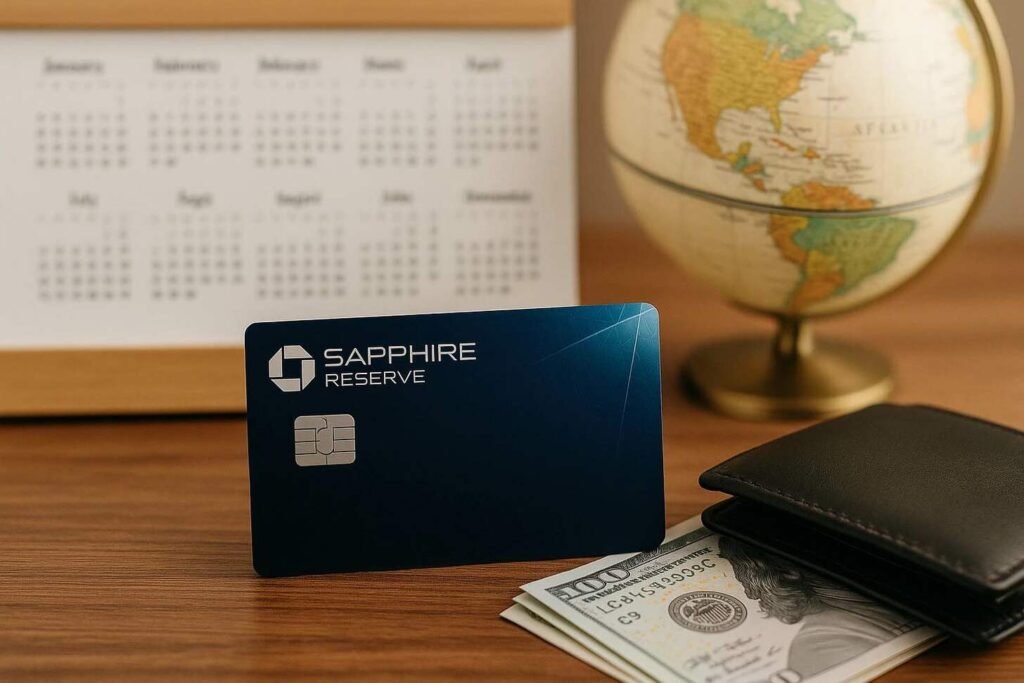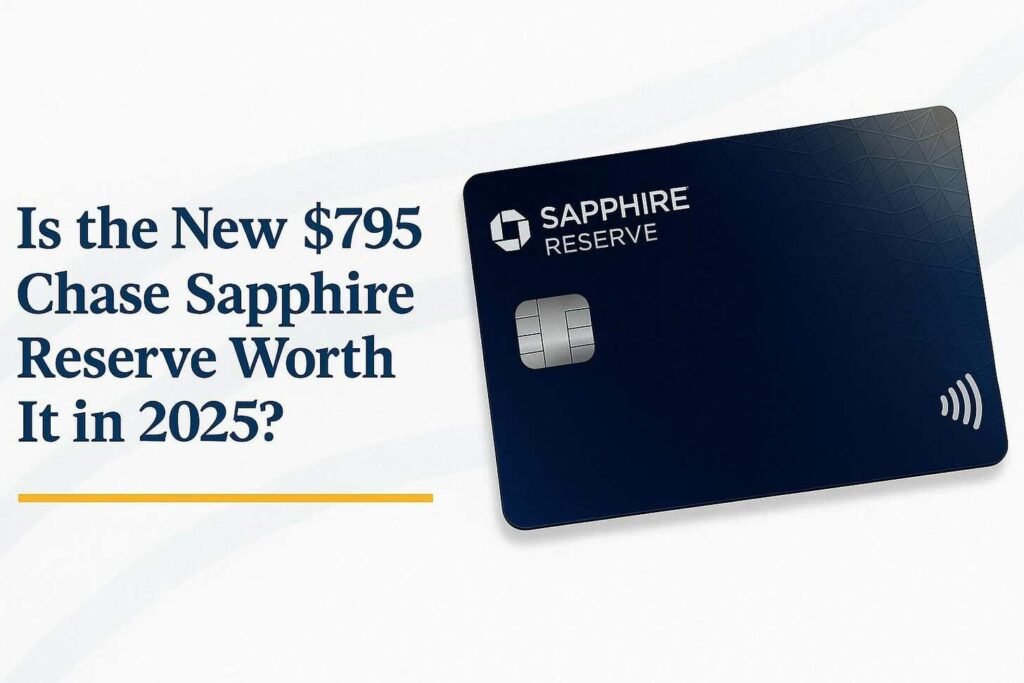Affiliate Disclosure: Travel with Plastic may earn a commission or referral bonus from some links on this site. These affiliate links help support our work and may influence the placement or promotion of certain products or services. However, our content is independently crafted to reflect honest opinions. Not all offers or products are included. There is no additional cost to users when they utilize our affiliate links.
JPMorgan Chase’s bold move to raise annual fees by $245 creates America’s priciest premium travel card. This dramatic shift comes with upgraded rewards and credits totaling $2,000+ annually – but only strategic spenders will unlock full value.
We’ve analyzed every detail of the revamped benefits package. The 8x points on portal bookings and 4x earnings on direct hotel/airline purchases create new opportunities for rewards maximization. Yet the $195 authorized user fee demands careful family plan calculations.
Frequent travelers face critical questions: Do Peloton benefits and streaming subscriptions align with your lifestyle? How often will you use The Edit’s curated experiences? Our breakdown reveals which demographics benefit most from these changes.
Key Takeaways
- Annual fee increases 45% to $795 – highest among premium travel cards
- $2,000+ potential annual credits require specific spending habits
- New rewards structure favors Chase Travel portal users
- Authorized user costs triple to $195 per person
- Competitive positioning shifts against Amex Platinum
- Value proposition varies dramatically by travel frequency
Overview of the Chase Sapphire Reserve Update
Major shifts arrive for premium travel enthusiasts as one of America’s most popular rewards cards undergoes significant restructuring. The latest adjustments create both opportunities and challenges for frequent travelers seeking maximum value.

Key Feature Enhancements and Fee Adjustments
The updated program introduces layered earning structures requiring strategic spending. Portal bookings now yield 8x points – a 60% boost for flights but reduced returns on hotel/car rentals. Direct airline/hotel purchases earn 4x points, while general travel spending drops to 1x.
- 45% annual cost increase ($550 → $795)
- Authorized user fees jump 160% to $195 each
- New business version mirrors personal benefits
- Legacy 3x travel category eliminated
Timeline of Changes and Cardholder Impact
Existing members get until October 26, 2025 before facing higher fees – crucial time to evaluate usage patterns. New applicants encounter revised terms starting June 23, 2025. This staggered rollout allows comparison between current and future benefit structures.
Families with multiple cardholders face tough decisions. Adding three users now costs $585 annually – nearly matching the previous primary card fee. Businesses gain options with the corporate version, though identical pricing raises questions about differentiation.
Is the New $795 Chase Sapphire Reserve Worth It in 2025?
At $795, this card’s value proposition hinges on specific lifestyle alignments. We crunched numbers across six traveler profiles to reveal who benefits – and who pays for unused perks.

Credit Accessibility Versus Lifestyle Requirements
The advertised $2,000+ annual value contains three credit types:
- Automatic offsets: $300 travel credit and Priority Pass access
- Targeted benefits: $120 Lyft/Peloton credits for urban professionals
- Luxury experiences: $500 Edit credits requiring boutique bookings
Frequent business travelers recoup fees fastest through 4x airline points and lounge access. Our analysis shows spending $1,250 monthly on flights/dining covers the annual cost through rewards alone.
Casual travelers face steeper challenges. Using less than 60% of specialty credits drops net value below competing cards. The $250 Apple services credit only benefits existing subscribers – otherwise, it’s sunk cost.
“Premium cards demand premium spending habits. This iteration rewards specific behaviors, not aspirational travel.”
High spenders ($75k+ annually) unlock hidden tier benefits: Southwest companion passes and IHG status deliver $1,500+ value for road warriors. Others might prefer multiple no-fee cards with targeted rewards.
Ultimately, the math favors those booking 3+ international trips yearly while using niche services naturally. For occasional travelers, simpler rewards structures often prove more lucrative.
Exploring New Perks and Travel Credits
Cardholders now access seven enhanced benefits requiring activation deadlines and merchant coordination. We’ve mapped each credit’s sweet spot to help you convert offers into tangible value.
Comprehensive Breakdown of Annual Credits and Benefits
Strategic planning unlocks the full $1,460 potential credit value. Track expiration dates and split payments for half-yearly allocations:
| Benefit | Value | Usage Tips |
|---|---|---|
| Exclusive Tables Dining | $300/year | Book through Chase app 48h ahead |
| The Edit Hotels | $500/year | Prepay 2+ night stays |
| StubHub Events | $300/year | Select “Pay with Points” at checkout |
| Apple Services | $240+/year | Auto-redeem via Apple ID |
Enhanced Travel Rewards and Redemption Options
The Points Boost program now offers dynamic values up to 2x on Chase Travel portal bookings. Compared to the old 50% bonus, this system favors luxury stays:
- IHG Platinum status delivers 60% bonus points
- Lyft credits combine with 10x points on rides
- DashPass members save $120+ annually on delivery fees
“Stack Peloton credits with Chase’s 5x points on fitness categories to double-dip rewards.”
Redeem points strategically: 75k points now cover $1,500 boutique hotel stays through The Edit. Always compare portal prices against direct bookings – sometimes cash rates beat inflated point requirements.
Understanding the Increased Annual Fee and Associated Costs
Evaluating the true cost of luxury travel benefits requires peeling back multiple fee layers. Beyond the headline $795 price tag, hidden expenses emerge when maximizing credits and managing additional users.
Breaking Down the Fee Structure
Chase now charges 160% more for authorized users – $195 per person versus $75 previously. A family with three users pays $1,380 annually before any travel spending. Compare this to competing cards:
| Card | Primary Fee | Additional User Cost |
|---|---|---|
| Sapphire Reserve | $795 | $195 each |
| Amex Platinum | $695 | $195 each |
| Capital One Venture X | $395 | Free or $125 |
When the Math Works for Travelers
These spending patterns typically justify the cost:
- Booking 4+ flights yearly through Chase Travel
- Regular use of Lyft/Peloton services
- Monthly dining expenses exceeding $500
Frequent flyers spending $15k+ annually on airfare gain $600+ in portal rewards alone. Combine this with automatic credits, and net costs drop below $100.
“Households must spend $4,200+ monthly across bonus categories to neutralize fees through rewards.”
Casual users face tougher calculations. Without consistent portal bookings or premium service subscriptions, alternative cards often deliver better value.
Comparing Sapphire Reserve to Other Premium Travel Cards
Choosing between premium travel cards requires matching features to spending habits. We compared top options to reveal clear winners for different traveler profiles.
Competitive Insights: Chase Sapphire Preferred and American Express Options
The Sapphire Preferred remains a strong alternative at $95 annually, offering 3x points on dining and streaming. However, its $50 hotel credit and 25% portal bonus can’t match the Reserve’s 8x portal rewards. For Amex Platinum users, the $695 fee includes better lounge access but weaker everyday rewards.
Key differences emerge in earning structures:
- Direct bookings: Reserve earns 4x vs Platinum’s 5x on flights
- Portal purchases: 8x points beat Amex’s 1:1 transfer ratio
- Dining rewards: Both cards offer 3x, but Reserve points value higher
Unique Advantages for High-Spending Users and Frequent Travelers
Spending $75k+ annually unlocks elite status perks competitors lack. Reserve users gain IHG Diamond Elite and Southwest A-List benefits – worth $1,200+ for frequent flyers. Dual-card strategies now work: pair Reserve with Preferred to maximize category bonuses.
“High spenders using both Sapphire cards can earn 11x points on portal bookings – unmatched in the market.”
Frequent international travelers benefit most. The Reserve’s 4x on flights hotels booked directly combines with Priority Pass restaurants – a feature Amex limits. However, casual travelers might prefer Capital One’s lower $395 fee with similar lounge access.
Conclusion
Navigating premium travel rewards requires matching card features to personal spending patterns. Chase Sapphire Reserve delivers exceptional value for those who organically use its upgraded perks – from boutique hotel bookings to Lyft credits. Success hinges on maximizing every dollar of the $2,000+ annual benefits through strategic redemptions.
Frequent flyers booking multiple international trips yearly gain most from 8x portal points and lounge access. Urban professionals benefit from stacking dining credits with Exclusive Tables reservations. Always compare portal rates against direct bookings to avoid inflated pricing traps.
This premium option shines when users activate all credits naturally. For occasional travelers, simpler cards often provide better returns. We recommend calculating projected rewards against the $795 fee – if credits cover 70%+ of costs, it’s worth considering.
Ultimately, Chase Sapphire Reserve rewards those who travel extensively and value curated experiences. Others might prefer combining no-fee cards for targeted earning without upfront investments.

